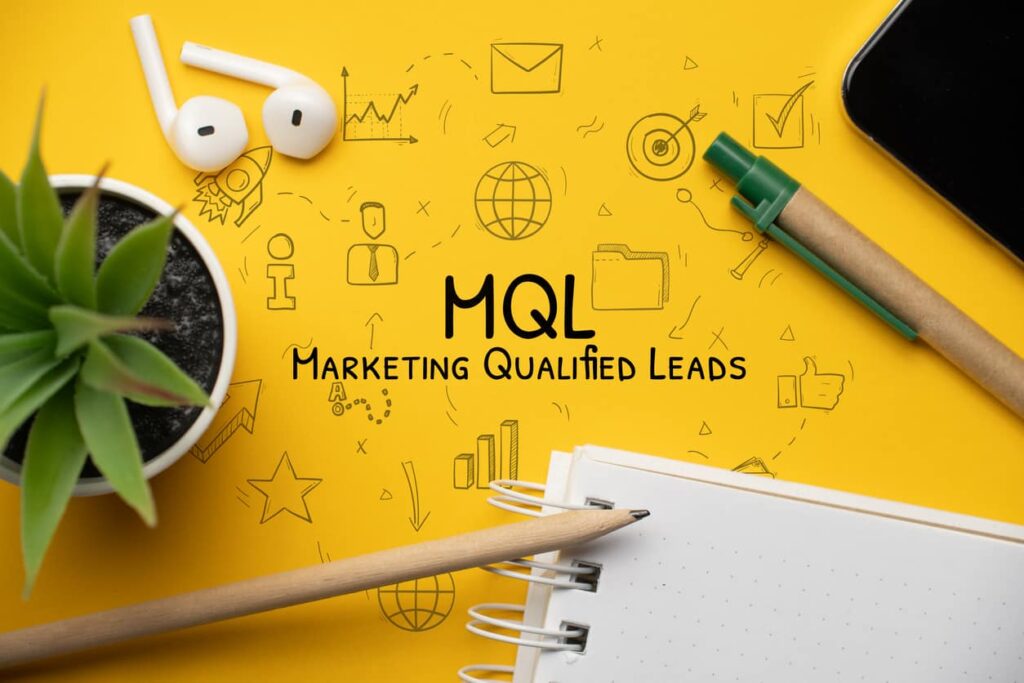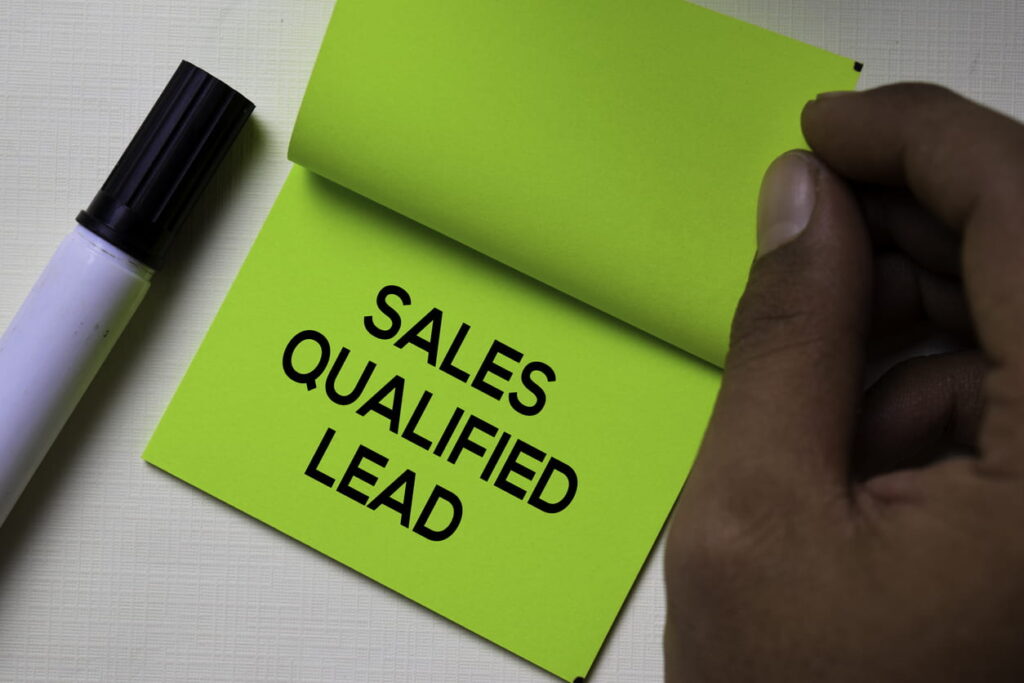As a small business owner, marketer or salesperson, you sometimes navigate the complex, confusing and ambiguous world of business terminology, especially when it comes to the conversion cycle that escorts your website visitors to become loyal customers. We talk about leads, prospects, MQL, SQL… sometimes with practical perceptions that are far from the theoretical definitions.
However, the stakes are high: understanding the differences between leads, prospects, MQLs and SQLs means that you can give each of them the “right treatment” to improve your sales performance. It also means optimizing sales force time, a scarce and expensive resource that can make or break your profitability.
To help you see things more clearly, the Twilead editorial team offers you a practical, clear and detailed guide. Objective: better understand these concepts to convert en masse!
I. Lead vs. Prospect: a point on terminology

Whether you’re a seasoned marketer or a beginner just learning the ropes, you probably know that there is still some ambiguity between the concepts of “lead” and “prospect”… an ambiguity that is sometimes maintained by professionals who tend to use the two terms interchangeably or take some liberties with the theoretical definition. Understanding the difference between the lead and the prospect is essential to tackle the topic of MQL and SQL.
The lead, or sales lead, is an individual or organization that has shown an initial level of interest in your company. In practice, a lead is someone who has filled out a contact form to download content, who has interacted with your posts on social networks or who has subscribed to your newsletter. They have been made aware of your company through the impact of your SEO strategy, an advertising campaign or a recommendation from a peer, and they have expressed a more or less explicit interest in your company.
On the other hand, the prospect is a potential customer who has shown an explicit, clear and frank interest in your product or service offering and who meets the criteria of your ideal customer profile. In concrete terms, a prospect is someone who has contacted you for a demonstration of your product, who has requested a quote or who has asked for a meeting with a sales representative.
To summarize, the difference between the lead and the prospect is primarily related to the target’s degree of maturity. The prospect is much closer to the purchase than the lead. To go further, you can consult our practical guide ” Lead vs. Prospect: distinguish them to better treat them! “.
Now that we’ve clarified that, let’s situate MQL and SQL in the conversion cycle before we get into the details. For the sake of practicality, let’s take a typical Inbound cycle:
- The visitor of your blog or website becomes a lead;
- The lead becomes an MQL;
- MQL becomes SQL;
- SQL becomes a prospect;
- The prospect becomes a customer;
- The customer becomes an ambassador of your brand.
As you can see, MQL and SQL are lead categories that express a gradation in their maturity.
II. MQL: What is Marketing Qualified Lead?

Marketing Qualified Lead(MQL) refers to a lead that has shown a slightly more explicit interest in your company than a simple visitor to your website. By convention, marketing considers a lead to be simply a visitor who is no longer anonymous. The MQL, on the other hand, has done more than just disclose its contact information. They have consumed content on a particular topic, interacted with your social media posts, downloaded a white paper and/or subscribed to your newsletter. It is important to understand that the boundary between a “lead” and an “MQL” is virtual, in the sense that a lead can become an MQL in a few seconds… just as he can complete the entire conversion cycle (visitor, lead, MQL, SQL, prospect and then customer) in a few minutes.
Companies that use a full conversion cycle typically mobilize a scoring system to identify MQLs from a lead pool. Objective: to optimize the time of sales representatives by feeding them with qualified leads that are theoretically more likely to go to the end of the buying process. This approach is all the more important in a context where French companies are facing a huge shortage of talent in the sales function. According to figures from the recruitment firm Michael PageIn France, there is a shortage of more than 200,000 salespeople. Let’s close the parenthesis.
What are the criteria for qualifying a lead in MQL?
As the name suggests, the MQL is qualified as such by the marketing department based on a number of pre-defined criteria. Here are some examples of conditions to qualify a lead as MQL:
- Have read at least three company blog posts;
- Identification of at least two visitors from the same company (thanks to the IP);
- Subscribe to the newsletter ;
- Opening of at least two successive emails from an email campaign;
- A browsing behavior that allows to identify a problem to which the company is able to respond (article on a theme, page presenting an offer related to this theme, then pricing page, etc.).
Each company must establish its own MQL qualification criteria according to its sector of activity, the specificities of its product, its culture, etc.
7 golden rules to implement an MQL system
Your business is growing, and the archaic process of contacting ALL the leads generated by your Inbound Marketing strategy is showing its limits. Your salespeople waste a lot of time chasing leads that don’t pan out, and promising leads are relegated to the waiting list, with an obvious loss of revenue and a problematic opportunity cost. Here are the 7 golden rules to follow to structure your conversion cycle and optimize the work of your sales force. Objective: convert en masse and at a lower cost!
- The first thing to do, and probably the most important, is to sit down around a table to define rigorously and precisely the criteria that make a lead be considered an MQL. Without a common definition, marketing and sales teams will never align, leading to friction and chronic inefficiency. And that’s not how you convert en masse.
- Use your Buyer Persona and your ideal customer profile to identify the characteristics of your MQL. If you have not yet defined your Buyer Personas, we advise you to read our guide ”
Buyer Personas: definition, concrete examples, steps and best practices (2023)
“. - Solicit feedback from your sales people. After all, they are in direct contact with the field. Ask them, “Based on your empirical experience, what type of lead do you find most ‘easy’ to convert?” Their answers will help guide your lead qualification system in MQL.
- Do not choose criteria based on information that is difficult to collect. Prefer accessible First Party Data, as well as demographic and firmographic qualifying factors such as industry, company size, lead’s role in the buying process, etc.
- Your technology stack should allow you to do a more or less thorough behavioral qualification. Internet users leave digital footprints that can guide you to the type of need they have, the urgency of the problem to be solved, their interests, etc. This information will not only allow you to qualify a lead in MQL, but also to provide sales representatives with useful information to personalize their sales pitch;
- Be careful not to set qualification criteria that are too restrictive. Otherwise, the marketing team won’t be able to fill the pipeline and your sales people won’t have anything to work with. Unless you are flooded with leads, you may need to be flexible in the qualification process… without passing poor quality leads to sales. So there is a balance to be found.
- Revisit the MQL definition quarterly, whether to adapt it to a new offering, or simply to refine the criteria in light of field data.
Don’t worry: this process is much simpler than it looks. Take the first step by bringing marketers and sales people together, set the framework, and the magic will happen. Don’t skimp on the time allocated to this essential component, because your sales performance depends on it!
III. SQL: What is a Sales Qualified Lead (SQL)?

At the beginning of this guide, we explained that the prospect is a more mature lead, who has expressed a more explicit interest in your company. The dynamics between MQL and SQL are similar, in that SQL is closer to the purchase than MQL.
Overall, SQL is an MQL that has been qualified by more “business” criteria, going beyond the scope of the user’s behavior on your website, your pages on social networks and with regard to your email campaigns, among others. In the overwhelming majority of companies, the qualification of the MQL in SQL is performed by the wider sales team. This can be a business development team or sales representatives, depending on the size of the company.
A good SQL record should contain the following information:
- Who is the “contact”? And who does he work for?
- What is his position in the company?
- Does it have sufficient authority to make a purchasing decision? If not, can it influence the person making the purchase decision?
- Does his company have the budget to use your services?
- What are its challenges and pain points?
- Can your offer solve their problem?
- How urgent is the need?
These questions are familiar to marketers and salespeople who practice the BANT method. This is a mnemonic that allows the sales team to gather the information that matters to qualify an MQL in SQL, namely:
- Budget: does the lead have the budget to buy your product?
- Authority: is the lead in a position to make a buying decision?
- Need: Can the lead’s problem be solved with your value proposition?
- Timing: is the lead looking to solve his problem in a hurry or at least within a reasonable time frame?
If the SQL is validated, the sales team will then be able to deploy all the means to try to make them a customer.
The 5 steps to go from MQL to SQL

Generally, the transition from MQL to SQL follows 5 steps:
- Once the marketing team has identified a lead (or a promising lead), it must integrate it into a lead nurturing loop, with targeted email campaigns for example;
- Ideally, this lead will continue to perform so-called “qualifying” actions, until it becomes an MQL. Depending on the criteria defined beforehand, these actions can be downloading content, subscribing to the newsletter, a browsing behavior that reveals a more or less precise need, etc. ;
- Once this MQL is validated, it will be transmitted to the sales team. Here, your sales and marketing teams need to be in perfect alignment, and marketing needs to pass on all the useful information to sales to continue the qualification, this time with the objective of turning MQL into SQL. This is where your CRM comes in;
- From there, the sales team can make contact, ideally within 24 hours of the MQL’s last conversion action, to qualify it as SQL, for example by applying the BANT method;
- It is possible that during the qualification call, the sales team finds that the MQL is not quite ready for the decision phase. The marketing team will have to take over to put this lead back into a nurturing loop.
Note: In large companies that have a structured sales team, with Business Development teams and sales representatives, an additional step can be observed, namely the transition from SQL to prospect. The conversion cycle then becomes: “visitor => lead => MQL => SQL => Prospect => Customer => Ambassador”. This complex cycle only makes sense in technical business areas with a complex sales cycle, especially when the qualification has to be done in collaboration with a sales engineer, for example.
To conclude on MQL and SQL
Understanding the terms “lead”, “prospect”, “MQL” and “SQL” is essential to structure your conversion cycle, optimize the time of your sales representatives (a scarce and expensive resource) and boost the sales performance of your company. When they are well nurtured, MQLs become SQLs, who in turn become customers and then potentially brand ambassadors who will bring you hot leads. It’s up to you!

